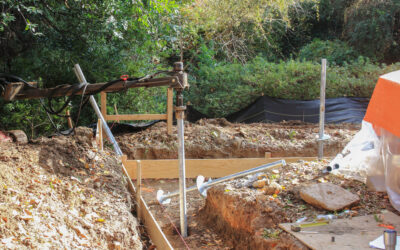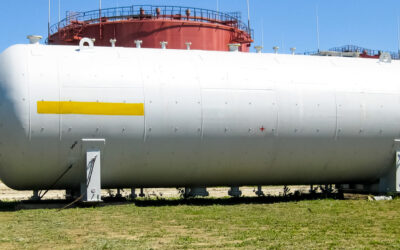Helical piles are used to create strong, steady foundations with the ability to bear heavy loads in unique or difficult terrains. Because of their critical function in supporting foundations for industrial applications, it’s important to know exactly how much weight helical piles can support.
Since the capacity of a helical pile depends on the material and construction of the pile itself, as well as the landscape and soil into which it is being placed, among other factors, the load capacity must be calculated for the specific type of helical pile and application.
There are three primary methods to determine helical pile capacity:
Torque Correlation
Torque correlation, also known as the torque-to-ultimate holding capacity relationship, is an empirical method for determining helical pile load capacity. This method holds that as a helical pile is installed via screwing into soil that is increasingly hard and dense, the torque—the resistance to installation—will increase. The higher this torque, the higher the axial capacity (the ability to bear load along the vertical axis of the pile).
In layman’s terms, the denser the soil, the greater the load capacity of the helical pile.
To determine the torque correlation, multiply the torque correlation factor (Kt) by the average installation torque (T) to get the ultimate uplift capacity (Qult). As a formula, this would be:
Qult = Kt x T
The torque correlation factor is based on the size and type of helical pile and is inversely related to shaft size.
Bearing Capacity in Soil
To determine helical pile capacity using the bearing capacity in soil method, theoretical calculations are made based on soil strength data. This data can be derived during a Standard Penetration Test (SPT), wherein the soil is drilled for soil sample collection and the resistance to drilling is measured.
The data collected during soil sampling and penetration testing includes the soil profile, groundwater, unit weight, and soil classification. Soil is classified as either:
- Fine-grained, such as silt or clay
- Granular soil, such as gravel or sand
Different soil grain sizes can result in different amounts of friction against the piles as they are installed, and therefore different levels of torque. As discussed previously, torque during installation affects the load capacity of the pile.
Using this soil strength data and information about the proposed helical piles and pile configuration, engineers can calculate the helical pile capacity in the proposed installation condition.
Direct Capacity Measurement
The direct capacity measurement method of determining helical pile capacity consists of performing a load test on an installed pile, to comply with the ASTM Standard Test Methods for Deep Foundations Under Static Axial Compressive Load. As this method actually tests the capacity of a helical pile under operating conditions, it is the most accurate method for determining load capacity.
In a direct capacity load test, compression load is applied to the installed helical pile in increments for defined intervals, until the maximum test load is reached, or the pile fails and can’t bear any more load. At each increase in load, the movement/settlement of the pile is measured, and this information is used to determine the capacity of the helical pile.
Due to the importance of accurately gauging the load capacity of helical piles to ensure a strong and durable foundation for the application, it’s recommended that helical pile capacity be calculated using at least two different methods.
While some geoengineers and firms allow for the use of only the torque correlation method to determine helical pile capacity in specific instances, as load testing and collecting soil data can be costly and exceed project budget, this should only be done if the calculations use an increased safety factor to ensure safety in the absence of more complete data.
Helical piles are one of the strongest foundation solutions on the market. If you’d like to use them for your upcoming project, contact the team at Elite Helical. We can help you install helical piles properly, quickly, and safely, so you can enjoy the benefits of helical piling to the maximum degree.






